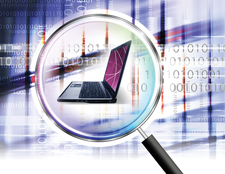Locate and fix hardware faults
Case Study

© Lead Image © Sean Gladwell, Fotolia.com
If your hardware is causing trouble, good advice can be hard to find, but Linux users have a number of easily installed analysis tools to help systematically track down the root cause of problems. This month, we present a selection of these tools.
Because computer systems are complex, problems are often difficult to identify when working on a PC or server. Besides software bugs and faulty configurations, hardware defects are the main cause of failures. An expensive and time-consuming replacement will obviously show which of the components is no longer working correctly; however, various Linux programs and kernel modules support troubleshooting and help you find problem configurations. In this article, I take a closer look at some of these tools.
System Components
Sometimes even identifying the hardware can be tricky. Laptops and convertibles whose components differ from current standards often make it difficult for users and administrators to identify the chipsets and GPUs or the status of individual assemblies. A hardware overview should determine the actual capacity of a laptop battery or the motherboard and BIOS revision.
Sometimes you can reach your target by replacing a flat battery or updating obsolete firmware. Especially with mobile systems, reading out the temperature values can point to error sources, such as a dried up thermal paste or a dusty fan that is consequently working inefficiently.
[...]
Buy this article as PDF
(incl. VAT)
